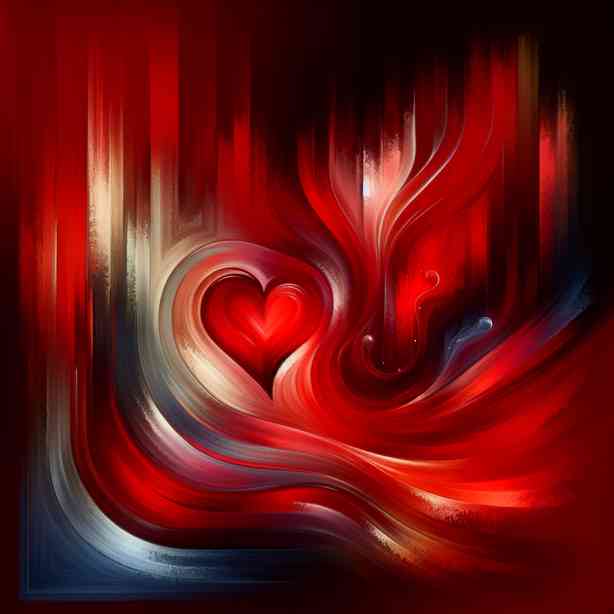
That Emotion You Only Paint in Red
In the world of art, colors have an outstanding ability to convey emotions and tell stories without uttering a single word. When we talk about the color red, it often represents powerful emotions, ranging from love and passion to anger and violence. The intensity of red captures a spectrum of feelings that resonate deeply within the human experience. This essay delves into the unique association of red with emotions, exploring its psychological implications, cultural significance, and its notable presence in artistic expressions.
Psychologically, red is a color that triggers a physiological response. Studies have shown that exposure to red increases heart rates and can elevate one’s adrenaline levels, which might explain why it is often used to signify urgency or importance. In various psychological research contexts, red is linked with feelings of arousal and excitement. For instance, in romantic contexts, red can enhance sexual attraction, while in competitive environments, it may promote aggressiveness and assertiveness. The emotional weight of red is so profound that many artists have sought to explore its depths within their work.
Culturally, the symbolism of red varies significantly across different societies. In Western cultures, red is often associated with love, desire, and even danger. It is a color frequently used in Valentine’s Day decorations, adorning hearts and roses to convey romantic sentiments. Conversely, in many Eastern cultures, red embodies good fortune and joy. It plays a pivotal role in celebrations such as Chinese New Year, where it is believed to ward off evil spirits and bring prosperity. This dichotomy illustrates how the meaning attributed to colors is deeply influenced by cultural backgrounds, making art a universal yet distinct way to express feelings tied to specific hues.
Art has long served as a medium through which artists explore and communicate the emotional resonance of colors, especially red. Renowned painters like Mark Rothko and Vincent van Gogh have employed red in their works to evoke profound emotional responses. Rothko’s color-field paintings often leverage red as a way to immerse viewers in an emotional landscape, encouraging introspection and contemplation. In contrast, Van Gogh’s use of red in works like “The Bedroom” captures both warmth and turmoil, reflecting his complex emotional state. These historical examples underscore that red is not merely a color but rather a profound emotional conduit within artistic expressions.
As we consider the implications of red in today’s art scene, contemporary artists continue to challenge and expand upon traditional associations. For example, artists like Kehinde Wiley use red in their portraits to juxtapose historical power dynamics with modern interpretations of identity and culture. These contemporary works instigate critical dialogues that compel audiences to rethink their preconceived notions about color and emotion. In this way, red remains a vibrant aspect of artistic expression, serving as a bridge between past and present, individual and collective experience.
Moreover, the impact of red isn’t limited to visual arts alone; it extends into different avenues such as film, literature, and music. Film directors often use red as a cue to signal important plot points or emotional shifts. In literature, authors employ imagery related to red to heighten tension or passion in their narratives. The incorporation of red in these creative realms illustrates how versatile and powerful this color can be in shaping emotional experiences and perceptions across various formats.
The social implications of red also offer an insightful perspective into our understanding of emotion in public spaces. The use of red in marketing, branding, and political contexts shows its effectiveness in attracting attention and evoking strong reactions. Fast food chains frequently employ red in their branding to stimulate appetites and encourage quick decision-making. In political settings, red can symbolize both passion and conflict, influencing public sentiment and rallying support around movements and ideologies. This versatility of red reinforces its role as a key player in not just personal emotional expression but also in societal dynamics.
In conclusion, the color red embodies a vast array of emotions—each with its own landscape of feelings and associations. Through its psychological effects and cultural significance, we can see how red conveys everything from love and passion to anger and urgency. Artists, both historical and contemporary, have harnessed the power of red to probe the depths of the human experience and navigate complex emotional landscapes. Whether in visual arts, film, literature, or social contexts, red remains a compelling component of emotional expression and communication. Understanding the nuances behind this color invites us to appreciate the intricate tapestry of emotions that weave through our lives, enriching our interactions with art and one another. Thus, the emotion that one can only paint in red serves as a reminder of the complexity of human feelings and the myriad ways we express them, inviting us to explore further the intricate relationship between color and emotion.


